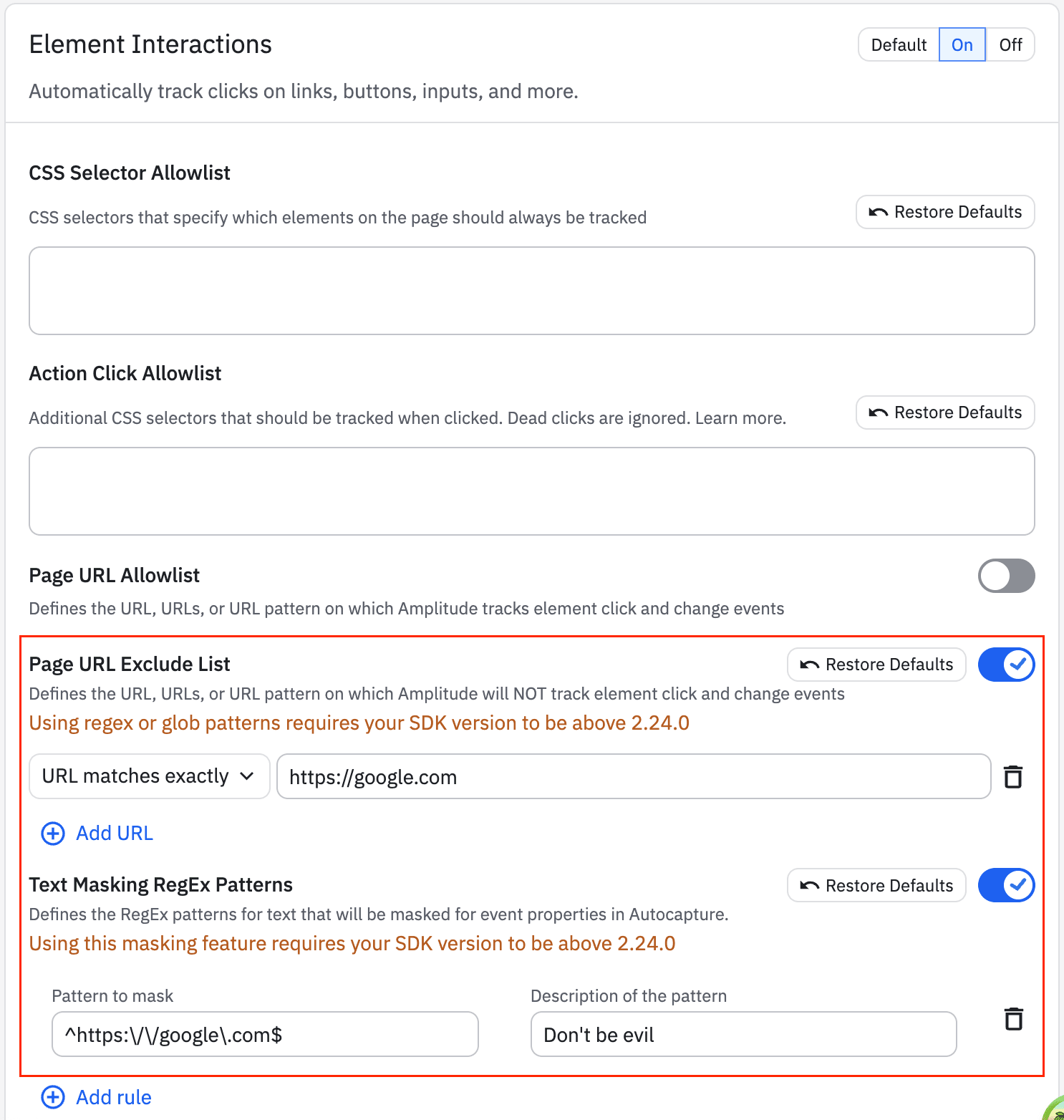Product Updates
Stay up to date with the latest Amplitude product releases, new features, and improvements.
Updates Timeline
September 2025
💾
Autocapture Masking & Data Protection
Sep 26
Data
📋
Content alignment for Guides and Surveys
Sep 5
Guides and Surveys
📋
Testing Status for Guides & Surveys
Sep 4
Guides and Surveys
📋
Version History for Guides & Surveys
Sep 3
Guides and Surveys
📋
Group Cohort Targeting for Guides and Surveys
Sep 3
Guides and Surveys
August 2025
📋
Element Selection Strategy
Aug 27
Guides and Surveys
📋
Desktop Apps for Guides & Surveys
Aug 27
Guides and Surveys
📹
Session Replay Cursor + Click Indicator
Aug 21
Session Replay
📋
Time-between and tag-based throttles
Aug 19
Guides and Surveys
🧪
Web Experiment Enhancements in the Chrome Extension
Aug 15
Experiment
💾
Self-serve Integration Portal
Aug 15
Data
🧪
Experiment debugger in Chrome Extension
Aug 15
Experiment
📊
Unexpected/unplanned event properties inheriting shared property metadata
Aug 14
Analytics
📹
Session Replay Saved Filters
Aug 14
Session Replay
📋
Custom Icon Sizes for Tooltip and Pin markers
Aug 13
Guides and Surveys
📊
Currency Conversion for Revenue Analysis
Aug 7
Analytics
🧪
Group Cohort Targeting for Remote Evaluation
Aug 7
Experiment
🧪
Web Experiment - Rearrange Elements in Visual Editor
Aug 7
Experiment
July 2025
🧪
Flag Change Alerts
Jul 30
Experiment
📊
Adjustments to Device Categorization Logic
Jul 29
Analytics
💾
Event Level Property Deletion
Jul 25
Data
📋
Improved Guides and Surveys loading time by not loading archived entities by default
Jul 24
Guides and Surveys
📋
Admin-Created Templates
Jul 24
Guides and Surveys
📋
AI Summaries for Survey Responses
Jul 24
Guides and Surveys
📋
Hide guides and surveys on non-matching pages by default
Jul 24
Guides and Surveys
📹
Heatmap Thumbnails
Jul 21
Session Replay
📋
Automated Guides and Surveys Localization using AI
Jul 2
Guides and Surveys
June 2025
📋
Guides and Surveys Resource Center
Jun 30
Guides and Surveys
🧪
Web Experiment: Control Variant Editing
Jun 27
Experiment
💾
Remote Configuration for Autocapture (Browser SDK)
Jun 24
Data
🧪
Pages for Web Experiments
Jun 18
Experiment
📊
Cart Properties in Custom Events
Jun 9
Analytics
📋
Improved Filtering for Guides and Surveys
Jun 5
Guides and Surveys
📋
Organize Your Guides and Surveys by Custom Tags
Jun 4
Guides and Surveys
📋
Guides and Surveys Cooldown Period Quantifiers
Jun 4
Guides and Surveys
📋
Survey Insights as Charts and CSV Export
Jun 3
Guides and Surveys
Filter by Category
Latest Updates
Sep 26, 2025
DataSep 26, 2025
[permalink]Autocapture Masking & Data Protection
Description: New Autocapture masking and data protection enables users to mask additional sensitive data with the use of specific tags, regex patterns and exclude URL lists.
Why: You can now protect against collection of sensitive data like names, email addresses, and account information. Autocapture offers more proactive ways for users to protect PII, such as adding specific tags for masking, defining custom regex patterns, and explicitly excluding URLs.
Where: This feature is accessible in the data settings page for managers and admins.
Available in EUDC: Yes
When: Available now!
Useful Resources: Autocapture protections docs
